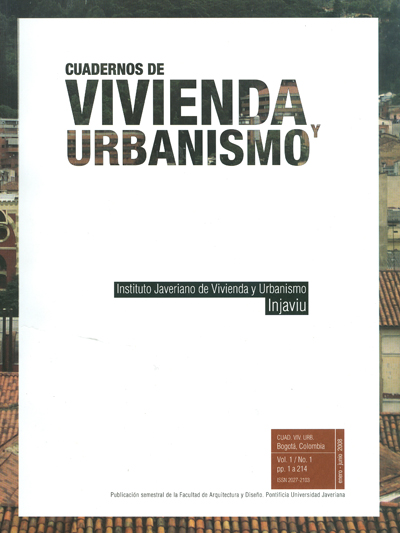Abstract
This is a study about the morphology of growth in a Colombian intermediate city, based on the analysis of the city of Tunja during the XX century. The study aims to contribute to the understanding of the production and transformation of the city and its relation with the territory. The morphological reading reveals clues to understand the society that produces the city. Given that most of the urban soil has been occupied by uses related to housing, the study focuses on those types of uses. Cities in developing countries are generally seen as unorganized. Because of this, before attempting this simplistic approach, the study aims to find the logic of occupation associated to hereditary models and to power relations among urban agents. Following this, the following questions are answered: What are the urban growth models in Tunja and what is their relation with urban agents? What is the space-temporary expression and influence of the agents that construct the city? The answers to these questions are useful to formulate policies, plans, and projects that modify problematic situations, and in turn, to follow the appropriate mechanisms that allow this.
This journal is registered under a Creative Commons Attribution 4.0 International Public License. Thus, this work may be reproduced, distributed, and publicly shared in digital format, as long as the names of the authors and Pontificia Universidad Javeriana are acknowledged. Others are allowed to quote, adapt, transform, auto-archive, republish, and create based on this material, for any purpose (even commercial ones), provided the authorship is duly acknowledged, a link to the original work is provided, and it is specified if changes have been made. Pontificia Universidad Javeriana does not hold the rights of published works and the authors are solely responsible for the contents of their works; they keep the moral, intellectual, privacy, and publicity rights.
Approving the intervention of the work (review, copy-editing, translation, layout) and the following outreach, are granted through an use license and not through an assignment of rights. This means the journal and Pontificia Universidad Javeriana cannot be held responsible for any ethical malpractice by the authors. As a consequence of the protection granted by the use license, the journal is not required to publish recantations or modify information already published, unless the errata stems from the editorial management process. Publishing contents in this journal does not generate royalties for contributors.


